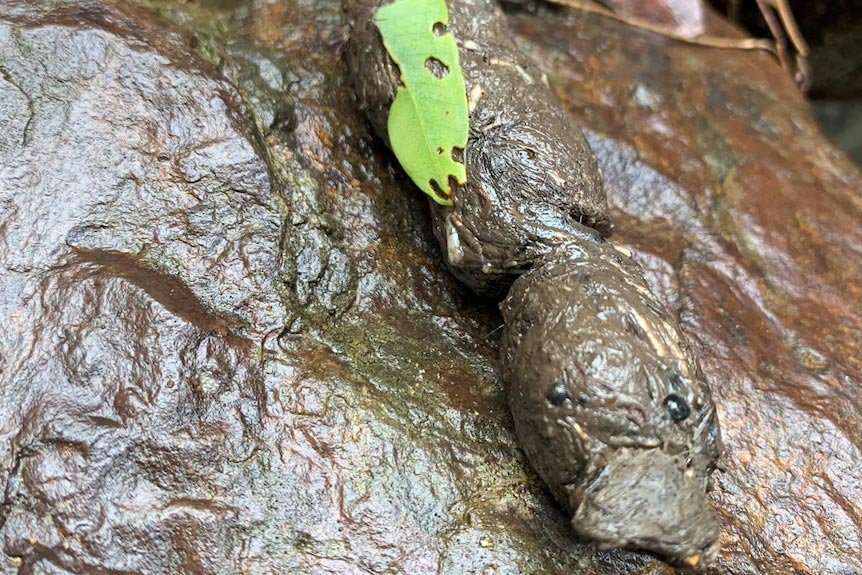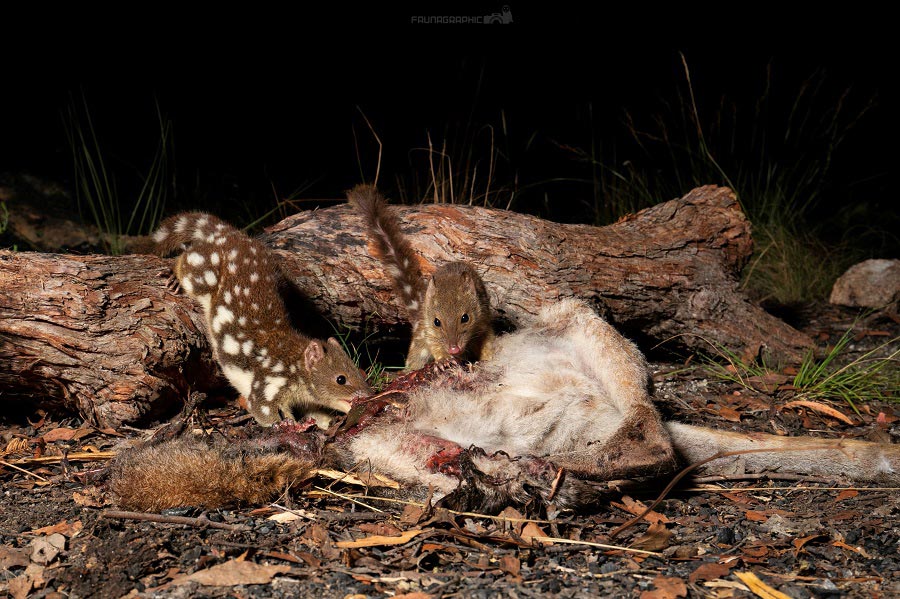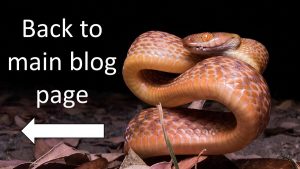Endangered spotted-tail quoll (Dasyurus maculatus) scat discovered in Logan
A fresh spotted-tail quoll scat has been discovered on a property in Undullah, QLD during a routine surveying effort. The Logan City Council collected the specimen and sent it for lab testing. It was confirmed as a spotted-tail quoll (STQ) through DNA matching of the hair found within the scat. Efforts to find spotted-tail quolls in South East Queensland have been largely unsuccessful. Therefore, any small discovery is a large one for the conservation of the species.
STQ were thought to be extinct in the greater Brisbane area for over 50 years until sightings began to be recorded and survey efforts were expanded. A road kill specimen was found in 2004 on the off-ramp from the Centenary Highway at Camira. Since then there have been four roadkill’s reported; two not collected and two collected. There has also been three quoll scats (one in 2019 at Mt Perry using detection dogs) and several live sightings with no images. The roadkill animal discovered in 2005 was a deceased male on the side of the Mt Lindesay Highway. Since then there have been few indications of a population existing in the area. Last year there was un unconfirmed sighting of a STQ in Lyons, a suburb close to Undullah.
Matt Cecil, the project manager for Queensland Quoll Seekers Network said the scat was a significant finding. With over 90,000 hours of camera monitoring over the past ten years, only one quoll was found on the footage and that was in the Scenic Rim area in 2013.

Spotted-tail quoll scat was found on a privately owned property at Undullah, Logan. Photo credit: Logan City Council
Ecology of the spotted-tail quoll
Spotted-tail quolls are an endangered species closely related to the Tasmanian devil (Sarcophilus harrisii) and thylacine (Thylacinus cynocephalus). They are the largest carnivorous marsupial on mainland Australia with adults weighing between 1kg-1.3kg.
STQ’s are mostly nocturnal, with some day time activity. They mostly consume medium-sized mammals such as possums, gliders, bandicoots, rabbits and small wallabies. They also eat carrion, birds and eggs (including poultry which can lead to human conflict). At times they can eat seeds, berries and plant matter. The juveniles consume more small mammals, reptiles and invertebrates.
They are solitary, highly mobile animals with large home ranges that are often non-overlapping. Males have a home range of up to 2,500 hectares and females up to 175 hectares. This is the largest of the four quoll species in Australia. The others being the western quoll, eastern quoll and northern quoll. They are short lived and have a low reproduction rate. They live 3-5 years and are sexually mature at 2 years old. STQ’s have a defined breeding season during winter and multisire (have multiple males to one female). Gestation is 21 days long with an average litter size of 4-6 young. The young are off the teat at seven weeks and left in the den while the mother hunts. They are then independent at 18-20 weeks (November).
They occur in tropical, subtropical and temperate rainforest, vine thickets, wet and dry eucalypt, woodland, coastal scrub and heathland. They are also found in rubbish dumps and farmland. The females den in hollow logs, rock crevices, wood piles, tree hollows and under houses.
What can you do
Assist habitat and restoration efforts (locally and on your own property) (See the Save the Spotted-tail Quoll Landholders Guide here)
Promote awareness of quolls, their ecological importance and their conservation requirements
Assist survey efforts by reporting all sightings.
Be a responsible pet owner.
More information and how you can help please visit Quoll Seekers Network



